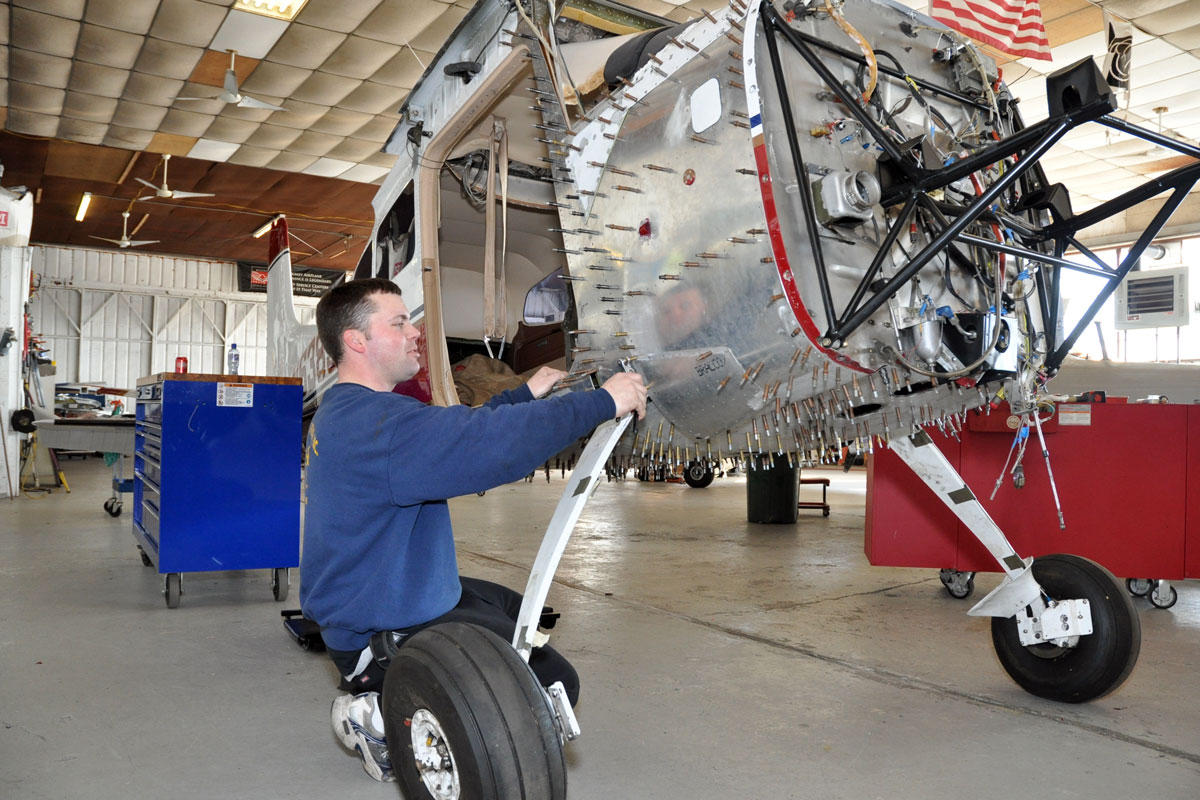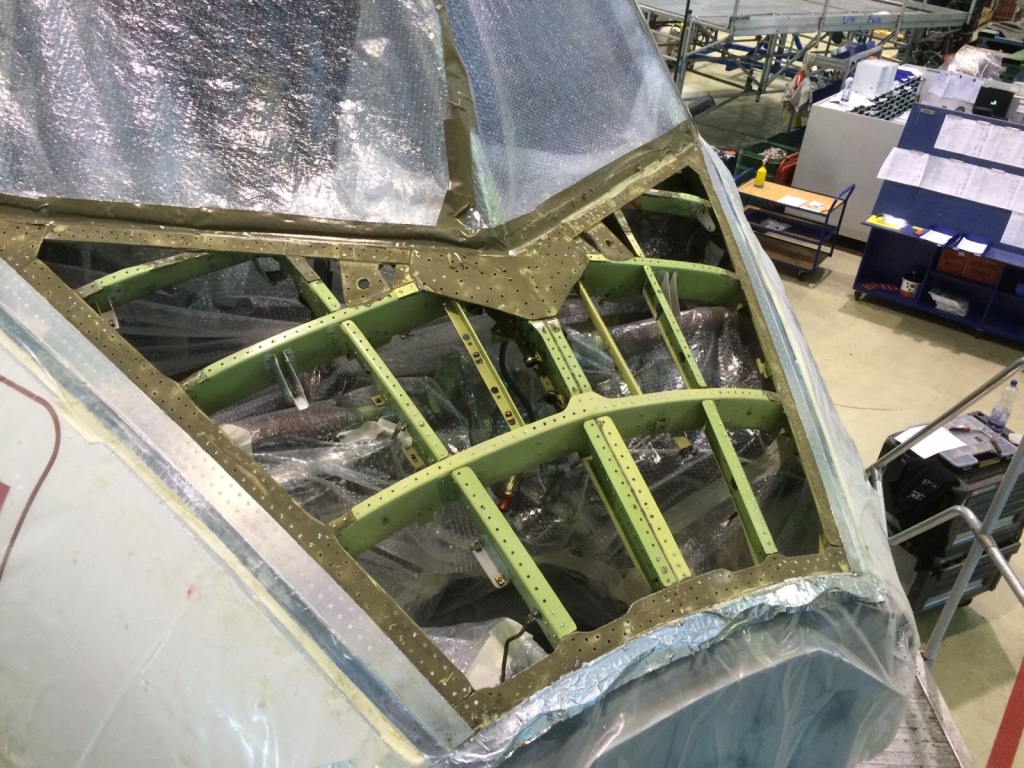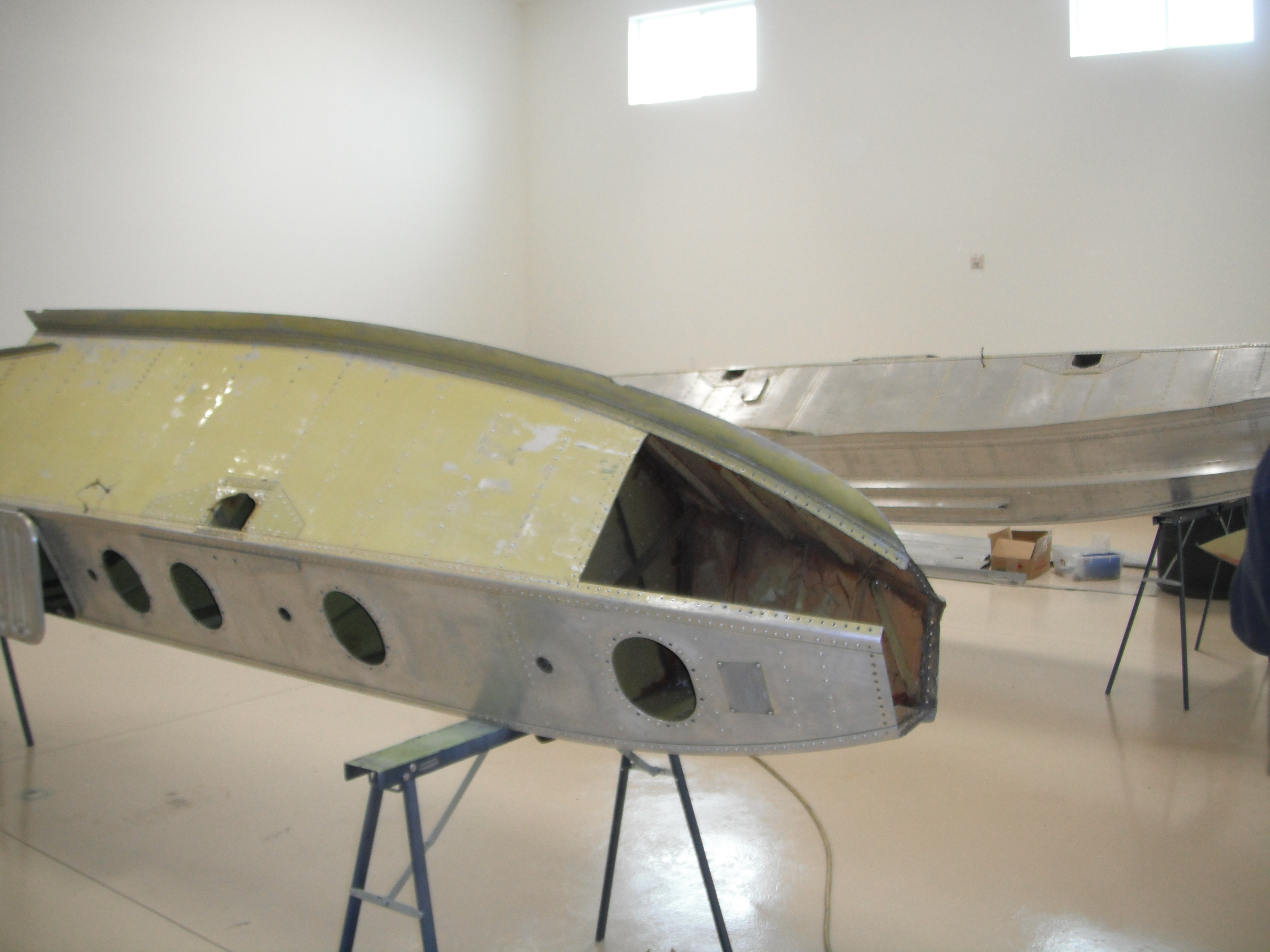Aircraft Sheet Metal Repair - When initially looking for the right shrinker-stretcher tools for my shop I became frustrated. While tools were available I felt they were heavy in terms of weight and cost. The cost of acquisition now exceeds some $7,000 when buying all the required tooling.
a better tool was needed for specialized spot repairs so I set out to design and build my own tool which I call the “MinimizerTM” shrinker-stretcher. The hand held shrinker-stretcher is a fraction of the cost, much lighter and easier to use
Aircraft Sheet Metal Repair

, hand crafted in the USA, cadmium plated, about half the weight, and uses the same interchangeable dies that fit in a standard shrinker. asking the right interview questions is essential to gauge the experience and expertise of an Aircraft Sheet Metal Mechanic. The questions should cover a range of topics, including knowledge of sheet metal fabrication techniques, experience with different sheet metal and materials of production, sa
In Conclusion
, proficiency with blueprint reading and interpretation, experience with aircraft structural repair and modification, and ability to perform complex mathematical calculations and measurements. If you spend a little time to consider the known elements of a repair before forging ahead, then you will be less likely to paint yourself into a corner because you were rushing. When using any shrinker-stretcher designed for thin metals it's important to check that
it is adjusted properly. In the case of the Minimizer this is done by loosening up the lock nuts on the eccentric bolts and moving them until both edges of the beveled blade edges are parallel and touching. This adjustment will insure that the pressure on the dies
is equal which is important on thin metal. The more that you cold-work the material the harder it gets, so try to complete your shaping or repairs in as few moves as possible. The correct process is to take the part or metal over to the vice where the shrinker is located. But what if this damage is on the horizontal stabilizer of a general aviation aircraft and removal from the aircraft to facilitate bench work is labor intensive and costly?
The vise-mounted shrinker-stretcher has been around for a long time and the value is undeniable. However, it was designed to be strong, heavy, immovable, and cumbersome. SEAL Aviation operates as a mobile company which allows the SEAL team to bring the experience and tooling to your aircraft wherever it may be to perform large structural repairs. We are uniquely positioned to provide mobile structural repairs anywhere in the world along side our SEAL other

Describe Your Experience With Sheet Metal Materials And Selection Explain Aircraft Structural Repair/Modification Experience
services. Our expert sheet metal technicians are among the most experienced and knowledgeable in the aviation industry. Structural repairs can be complex endeavors that require specialized tooling and skills that should only be trusted to experienced professionals. SEAL Aviation possesses specialized tooling and has developed airframe repair techniques while
operating a mobile company. Our technicians have gained expertise through years of past military service and continued education which allows us to serve our valued customers around the world. Candidates who have extensive experience in sheet metal fabrication techniques are valuable assets to aviation companies. Their ability to create high-quality, durable components is essential for ensuring the safety and reliability of aircraft.
work with cutting, bending, and welding sheet metal materials. Candidates who can provide examples of their experience with these types of projects and their proficiency in performing complex mathematical calculations and measurements will stand out to hiring managers in the aircraft sheet metal mechanical industry.
When working on aircraft sheet metal fabrication and repair, it is important to have experience working with different types of sheet metal materials. This includes aluminum, titanium, and steel. During an interview, it would be useful to ask the candidate if they have worked
Describe Your Experience With Safety Protocols And Ensuring A Safe Work Area
with these materials and how they determine which material to use for a specific project. This involves calculating the appropriate angles and dimensions for the wing structure, taking into account factors such as the weight of the aircraft, the materials used, and the desired performance. Precise measurements are also required for the installation of wing skins, which must be precisely
cut and shaped to fit the wing structure. Ensuring a safe and clean work environment is essential for the well-being of the aircraft sheet metal mechanic and the quality of the work. Candidates who can demonstrate experience and knowledge in maintaining a safe and clean work environment and adherence to safety protocols and procedures will

be valuable hires in the industry. Hopefully I've been able to provide you a few new ideas to achieve better results the next time you have a thin sheet metal repair or fabrication job. Make it fun and be creative, but above all make it as easy as possible by thinking the
job through first and then use the right tools. Let's say this takes care of the damage on the left side of the stabilizer, but what about the crack and the stop drilled hole on the right side? A typical example is a crack that also happened from being over stressed sometime in the past with a
Describe Blueprint Experience And Ensure Aircraft Accuracy
pair of pliers or wrench used to remove the elevator hinge bolts. If you want to make a flush repair that looks nice you may have a dirt. This skin is too thin to use flush rivets, so dimpling will serve the purpose but some shrinking may
be required for the skin to lay flat. Dimpling also shrinks the material even more but it also adds rigidity to the repair. A skilled sheet metal mechanic should be able to determine the appropriate material based on factors such as the intended use of the aircraft, weight considerations, and cost. The ability to select the correct material is critical for ensuring that the aircraft is structurally sound and me
all necessary safety standards. My method is to mark the high spots with a pencil on the stretched material. This is where you will use the tool and center the jaws. Smaller shrinks over a larger area is much better than a large shrink in one area which results in buckling the
skin. This is difficult to remove and might crack the skin; either way buckling the skin makes the job much harder. Using the small shrink method will get the metal to lay straight. Push on the aluminum to see if it wants to spring back.
Describe Your Experience With Sheet Metal Fabrication Techniques And A Project Example
If it does spring back you may need a small shrink or two in the right place to remove the “oil canning.” One of the more common hand operated forming tools is the shrinker–stretcher. This may be one of the first metal forming tools you get to use, but you may not fully understand its operation. It works by applying tremendous pressure on dies that grab the
surface of the metal to push the metal together or apart. Maintaining a safe and clean work environment is critical in the aircraft sheet metal mechanic industry to prevent accidents and ensure the quality of work. This includes proper maintenance and use of tools and equipment, as well as adherence to safety protocols and procedures.
If you have ever worked with aircraft sheet metal you have undoubtedly done something to that metal and then noticed that it had an unexpected effect somewhere else. Getting unwanted shrinking and stretching where you didn't intend is a costly and time consuming mistake. The ability
To straighten thin skin before riveting can make all of the difference to achieve a professional result. Using this process not all of the shrink lines need to be in the same plane, and they can be varied 45 degrees to break up the lines and remove the shrink marks. It is also better to regularly study the damage and the effect that you are
Describe Aircraft Structural Repair/Modification Experience And Safety Standards Adherence
Having on the aluminum rather than go too far and buckle the skin. Trying to stretch metal that is already stressed with lines stamped in the surface can very easily result in a crack in the skin. It's best to proceed slowly with caution.
Interviewing an Aircraft Sheet Metal Mechanic requires asking specific questions to gauge their level of experience and expertise in the field. As aircraft safety and maintenance are crucial, it is vital to find the right candidate with the required knowledge and skills. Interview questions designed should be

to assess their understanding of safety protocols, familiarity with different fabrication techniques, materials, and ability to interpret blueprints and perform complex mathematical calculations. Blueprint reading and interpretation are essential skills for an Aircraft Sheet Metal Mechanic. The ability to read and understand complex engineering drawings and schematics is crucial to ensuring that the aircraft is built to the correct speAircraft Sheet of Metal Mechanic, the candidate has tanshoulders
How to read blueprints and identify all of the necessary measurements and dimensions. Hangar rash is common on aircraft, both fixed wing and rotary wing alike. They are both built from the same thin aluminum skins and difficult to work with. Often times you will find metal on an aircraft has been bent and subsequently stretched. If you take
Provide An Example Of Performing Complex Math/Measurement During Aircraft Project
a hammer and dolly trying to straighten this you will just be chasing your tail. You may reach for the steel hammer next but hitting the metal will probably stretch it even more. In this case the metal needs to be shrunk not stretched.
In the aviation industry, it is crucial to have skilled Aircraft Sheet Metal Mechanics who are proficient in various fabrication techniques. One of the key skills is the ability to cut, bend, and weld sheet metal materials to create aircraft components that are structurally sound and
meet safety standards. They should also be able to interpret the various symbols and annotations on the blueprint to understand the different types of materials and parts that will be used in the construction process. To ensure that the aircraft is built to the correct specifications, the candidate should also have
experience double-checking their work and verifying that all measurements and dimensions are accurate before beginning the construction process. Robert Behrend holds and A&P and IA. He founded his business Aerostructures of the Palm Beaches Inc. in 2003 which specializes in structural repair work on corporate use and general aviation aircraft, government prototype design, and commercial use aircraft. Robert graduated from Teterboro School
Aeronautics and has 25 years experience in the aeronautics engineering and fabrication business. For more information visit www.metalminimizer.com As an Aircraft Sheet Metal Mechanic, experience with structural repair and modification is essential. The ability to ensure that repaired structures meet all necessary safety standards is crucial to the safety of the aircraft and its passengers. Additionally, experience and complex calasulative mathematics
necessary for fabricating and repairing sheet metal components accurately. Performing complex mathematical calculations and measurements is an important aspect of aircraft sheet metal fabrication and repair. Candidates with experience in this area will be valuable to the industry. One example of a project where such calculations and measurements are necessary of ing install
“The right tool for the right job,” I remember these words from A&P school. After you have the right tool you need to be able to use it properly. This does not start with the tool, but with studying both the metal and the
damage you want to repair. Are you ready to improve your hiring process? Total Aviation Staffing has the perfect solution – a tailored staffing strategy that meets your goals and ensures high-caliber candidates. With our experienced recruitment teams and expansive network, we are confident in finding the right
your organization. Contact us today and let's get started! You won't regret it. Let us help you find the perfect candidate to bolster your team and propel your business forward! Reach out today and we'll get started on finding the perfect match
for your organization. We look forward to hearing from you! Always practice first on a scrap piece of metal the same thickness and temper as the aircraft skin being repaired in order to learn how the jaws will affect the material. Over time, the jaws become clogged with aluminum dust and do not grab the same way as
they did the last time they were used. It's a good idea to keep clean the jaws with a file card, not a wire wheel, and remove material build up in the textured surface. After cleaning and testing on scrap material of the same thickness you
are using, you're ready to do some shrinking or stretching.
aircraft sheet metal repair shops, aircraft structure repair, aircraft metal structural repair, aircraft sheet metal basics, aircraft sheet metal repair accident, cessna cowling repair, aircraft sheet metal repair pdf, aircraft structural repair manual pdf

